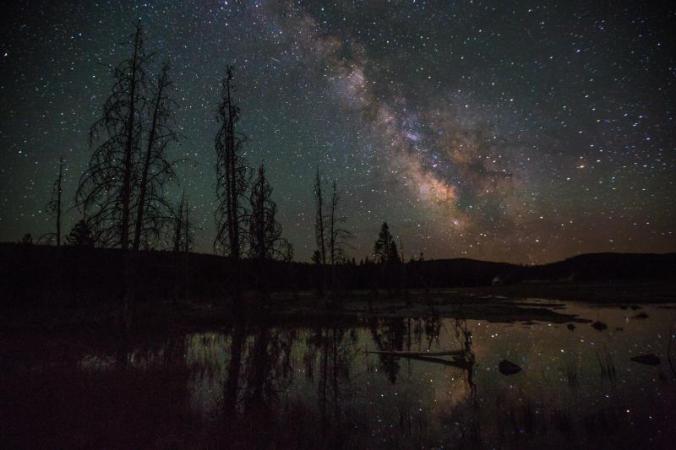For STEM Friday we are keeping with the astronomy theme with an amazing book about the universe written for young adults (ages 13+).
It is often difficult to find good nonfiction science books for young adults. By the time readers reach their teen years, if they are interested in science they are often forced to resort to reading books written for adults. That is why we were excited to find Our Universe Revealed: A Cosmic Exploration by E. L. Strauss, which targets this under-served age group.
Skimming through this book, the first thing you notice are the awe-inspiring illustrations.
How can a reader not be enticed to want to explore the universe after looking at photographs of the Milky Way like this one?
Our understanding of the universe is changing rapidly. Strauss guides the reader through a thorough introduction by relating unfamiliar and complex topics to more familiar ones. For example, how do scientists study the history of space? Strauss explains that the processes of uncovering clues are similar to those used here on Earth in the field of archeology, and then gives specific examples.
Do you know what a magnetar is? What about degenerate matter or population III stars? If these terms are unfamiliar, this book will introduce you to them. Strauss, however, doesn’t just string together vocabulary words. The author also explains how the concepts fit in the bigger picture. As a case in point, Strauss shows how our ability to create better technology to explore the universe has greatly increased our body of knowledge.
Although – as the book summary states – Our Universe Revealed is “aimed at bright, gifted, curious and creative teens,” it is also likely to appeal to adults who want a clear understanding of some of the most cutting-edge concepts in astronomy today. Nothing expands your mind like exploring the cosmos and this book is a wonderful way to start.
Paperback: 136 pages
Publisher: Thinxygen; 1 edition (November 6, 2015)
ISBN-10: 0620683562
ISBN-13: 978-0620683562
Disclosure: A .pdf was provided by the author for review purposes. Also, I am an affiliate with Amazon so I can provide you with cover images and links to more information about books and products. As you probably are aware, if you click through the highlighted title link and purchase a product, I will receive a very small commission, at no extra cost to you. Any proceeds help defray the costs of hosting and maintaining this website.
Come visit the STEM Friday blog each week to find more great Science, Technology, Engineering and Math books.










